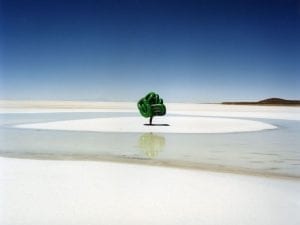Last year, preparing for the Labour Party Conference in his Brighton hotel room, Leader Jeremy Corbyn was snapped reclining in a mahogany chair – wearing a pair of open-toed sandals, underneath which were a pair of equally mahogany socks. Media outcry ensued: how could this man, with such a poor sense of fashion, have reached his esteemed position?
Of course, the criticism is absurd, however this example proves just how much personal style can affect the way that a person is perceived and, as such, how we can choose to mask and manipulate our outward identities through what we wear. This year, for its seventh edition, the Brighton Photo Biennial brings together fashion and style photography to explore understandings of individual identity, and the subversion of social and cultural norms through our daily dress.
Curated by Photoworks, Brighton Photo Biennial spans three major exhibitions across the galleries of the University of Brighton and former church turned contemporary gallery, Fabrica. Here, any ecclesial features fade into darkness behind a maze of illuminated billboards – each fly-posted with life-size images of tracksuited teenagers with rainbow hair, young Mods and East End hipsters, and one extraordinary image of a woman emerging from a corner shop, her head wrapped in a pink turban, black fishnets stretching into hightop platforms, heavy tribal necklaces overlapping one another.
Shot by fashion photographer Ewen Spencer, these are the tribes of youth culture, captured along the route of London’s Notting Hill Carnival. Spencer headhunted his distinct cast at carnival in 2015 and 2016 before returning with each of them to the same point to construct the work; the works are uncanny, semi-staged and cold lit.
Examining gender and sexuality is the first of the shows at the University: a Brighton-Mumbai collaboration between photographers Olivia Arthur and Bharat Sikka, photographing members of the LGBTQ+ community in each city. With the Brighton images a colourful celebration of exuberance and fantasy, and the Mumbai works a sensitive series of black and white portraits, the contrast is sharp, and poignant.
Perhaps the key feature to BPB this year is its European premiere of the Dandy Lion Project, an ongoing photographic investigation into the Black Dandy phenomenon by Brooklyn and Philadelphia-based curator Shantrelle P. Lewis. Spanning the University galleries and running a route through Brighton city centre, the 150 works by 30 photographers worldwide highlight black men – and, as of BPB, also women – whose personal style rejects stereotypical ideas of black masculinity in an act of rebellion via fashion. These figures, photographed against the backdrops of contemporary city life throughout the Diaspora from New York to Johannesburg to London and the Kinshasa, are self-styled and elegant, combining Edwardian-era suits with traditional African details.
The series was born out of P. Lewis’s frustration with the dominant media portrayal of the black male, in her words “a very aggressive, negative image,” and an awareness of the black dandy style across generations. While the series is on one hand a beautifully shot “ode to well-dressed black men, to the art of dressing up, the art of sartorialism,” with the current racial tensions in the USA the project has serious pertinence, and as Shantrelle explains “during the Civil Rights movement and social unrest, it was important that people would always dress up in their ‘Sunday best’; these nostalgias reflect that.”
Throughout BPB, self-styling is considered as a form of empowerment – whether it be the refined sophistication of a black dandy, the flamboyant eye make up of a Brighton drag queen or the neon dreadlocks of a London teen.
Chloe Hodge
The Brighton Photo Biennial runs until 30 October. Find out more: www.2016.bpb.org.uk
Credits:
1. Daniele Tamagni, The Smarteez, Joburg Style Battle Series (2012). Courtesy of the artist.





